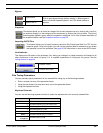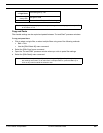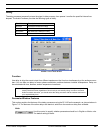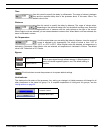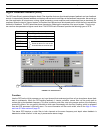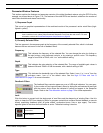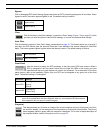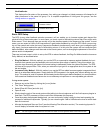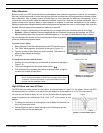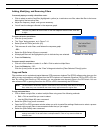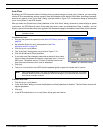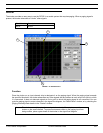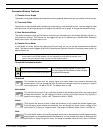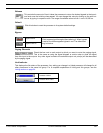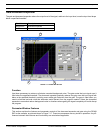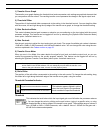
© 2003 Shure Incorporated DFR22 Software Guide 70
Digital Feedback Reducer (DFR)
Filter Allocation
By default, half of the DFR processor filters are allocated as fixed, and half are dynamic. However, you can specify
how many of the total number of notch filters will remain fixed, and how many will be dynamically allocated as feed-
back is detected. Use a greater number of fixed filters on input channels for stationary microphones. In this
instance, the room acoustics define the dominant feedback frequencies, which do not change appreciably. Use a
greater number of the dynamic filters on input channels for wireless or hand-held microphones. In this situation,
feedback frequencies change drastically as the microphone user wanders the room or sound stage. Both fixed and
dynamic filters will automatically deepen as feedback is detected.
• Fixed - Once set, the frequency of a fixed filter will not change unless you manually clear all of the filters.
• Dynamic - When all feedback filters are deployed and new feedback frequencies are detected, the DFR re-
deploys each dynamic filter at the newly detected frequency, in the order of oldest dynamic filter to newest.
You can designate the number of fixed versus dynamic filters using either
of the two techniques explained below:
To use the “Fixed” dialog:
1. Select [Options>Fixed filters allocation] from the DFR window's menu.
2. The “Fixed” dialog appears, as pictured to the right in Figure 7-11.
3. Type the number of fixed filters you wish to allocate. The number of
dynamic filters adjusts accordingly.
4. Click [OK].
To change filter allocation with the mouse:
1. Position the cursor between the red brackets as indicated to the right in
Figure 7-12.
2. The cursor changes to the horizontal resize symbol:
3. Click and drag left to increase the number of dynamic filters, or right to
increase the number of fixed filters.
High Q Filters and Low Q Filters
The DFR offers two width options for notch filters, as pictured below in Figure 7-13. By default, filters in the DFR
are deployed as [
HIGH Q] filters. As a high Q filter gets deeper its Q increases up to 101 (1/70
th
of an octave).
You can also set filters to deploy at [
LOW Q]. Low Q filters affect a slightly wider
range of frequencies by maintaining a Q of 14.42 (1/10
th
of an octave) as they
deepen.
• To change the setting for an existing filter, click to select the filter and use
the [
TYPE] drop-down menu.
• Use the [Options] menu to select the high or low Q setting for all new
dynamic filters as they are deployed.
Note: To allocate filters from the front panel, press the auto-clear button to
set all currently active filters to fixed and all currently inactive filters
to dynamic. For more information on using the DFR22 front panel
controls, see the Installation Guide.
FIGURE 7-11: “Fixed” Dialog
Position Cursor Here
or Here
FIGURE 7-12: Changing Filter
Allocation with the Mouse
High Q
Low Q
FIGURE 7-13: Notch Width Options



